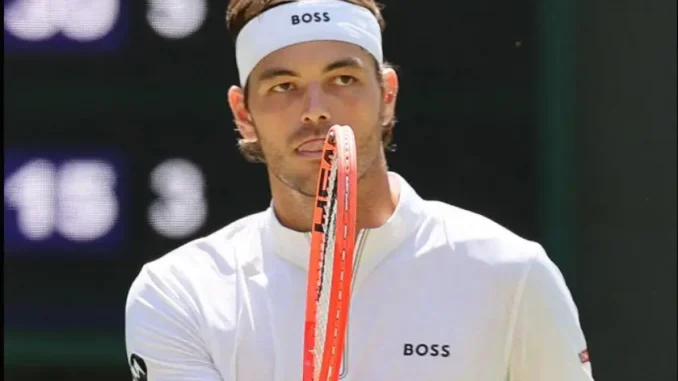
American tennis star Taylor Fritz has recently voiced strong opinions regarding the demanding nature of the ATP Tour calendar, labeling aspects of the current schedule as “insane.” His comments come amidst a wave of top players, including Grand Slam champions Jannik Sinner, Carlos Alcaraz, and Novak Djokovic, withdrawing from the upcoming Canadian Open, highlighting the increasing physical and mental toll on athletes.
Fritz, currently ranked World No. 4, expressed his frustration with the continuous expansion of the tennis season. “I mean, probably pretty much all the players for a long time have been asking for the season to be shorter,” he stated during a pre-tournament press conference in Washington, where he is kicking off his hard-court swing. However, contrary to the players’ desires, the tour seems to be moving in the opposite direction. “But all we are doing is just lengthening it, adding more stuff, we’re adding more, like, longer tournaments,” Fritz lamented, highlighting a perceived disconnect between player welfare and tour management decisions.
A particular point of contention for Fritz was the scheduling of events immediately following Grand Slams. He pointed to the Hopman Cup, which took place shortly after Wimbledon, as an egregious example. “The Hopman Cup was after Wimbledon. I didn’t even know this was going on. They had an event with like Felix [Auger-Aliassime] and [Flavio] Cobolli playing a tournament right after Wimbledon, and one of them is coming and playing here. It’s insane. We are just adding stuff to the calendar over and over 1again.” The tight turnaround, especially for players who go deep into major tournaments, leaves minimal time for recovery before the next intense phase of the season.
The issue is compounded by changes to the Masters 1000 events. Starting this year, seven of the nine Masters 1000 tournaments have been expanded to 96-player draws, effectively stretching them out to nearly two weeks, similar to a Grand Slam, whereas previously they concluded within a week. While this change offers players a day off between matches, a feature common in Grand Slams, it still contributes to the overall length of the season. Fritz acknowledged the benefit of rest days between matches: “To be honest, I am complaining about the length of the two-week tournaments, but at the same time, I don’t dislike playing a match and having a day off and playing a match.” However, he found it “weird” how some weeks he might prefer consecutive play, while others he prefers the break, suggesting mental and physical state influence preference.
The consequence of this jam-packed schedule is evident in the high-profile withdrawals from events like the Canadian Open, which begins just two weeks after the conclusion of Wimbledon. Sinner, Alcaraz, Djokovic, and British number one Jack Draper are among the notable names choosing to skip the tournament, prioritizing rest and preparation for the crucial US Open Series. Fritz himself had a deep run at Wimbledon, reaching the semi-finals, before having to quickly transition to the hard courts in Washington. He expressed understanding for those who need more time to recover.
Fritz also touched upon the ATP’s apparent reluctance to shorten the season. He ironically noted how the tour seems adept at “find[ing] ways to shorten the schedule to make room for other tournaments, but we can’t find room to shorten the schedule just for there to be nothing.” This points to a frustration among players that the priority appears to be revenue generation and event proliferation over player well-being. The upcoming calendar further exemplifies this, with the Canadian Open championship match scheduled for Thursday, August 7th, the very day the Cincinnati Masters 1000 event begins, followed closely by the US Open.
“I’d love to see it go back to just two weeks and maybe we can have an extra, can shorten the season a week, I don’t know. But it’s a lot of tennis. It’s a lot of tennis upcoming,” Fritz concluded, emphasizing the sheer volume of matches and travel demanded of professional players. His candid remarks resonate with a growing sentiment among the elite of the sport, who are increasingly vocal about the need for a more sustainable calendar that allows for adequate rest, recovery, and peak performance throughout the year. As the debate continues, the withdrawals of top players serve as a stark reminder of the physical and mental strain that even the best in the world endure, and the “insane” challenges posed by the relentless demands of the ATP Tour schedule.
Leave a Reply